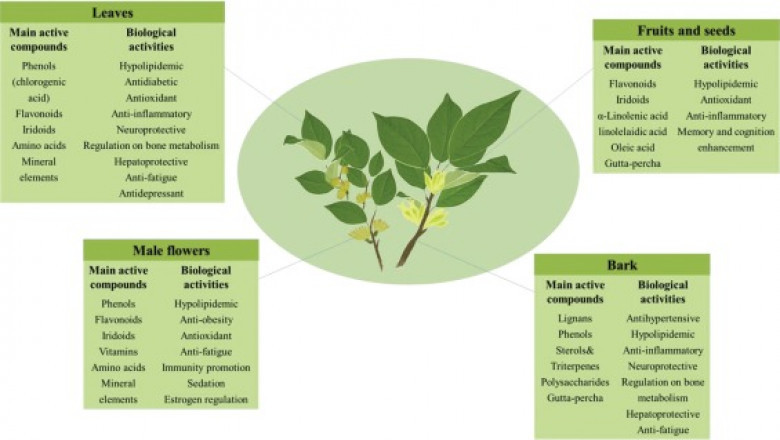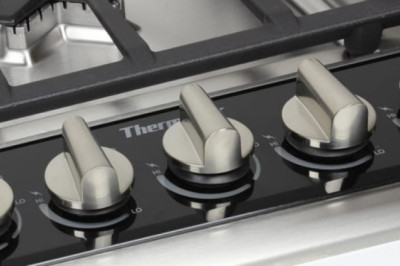views

Eucommia ulmoides leaf is a natural Chinese herbal feed additive. Its main component, chlorogenic acid, has many functions such as antibacterial, anti-stress, anti-oxidation, scavenging free radicals, promoting growth and improving meat quality . Eucommia ulmoides leaf extract is produced from Eucommia ulmoides leaves through extraction, concentration and spray drying. It is a green feed additive with high efficiency, environmental protection, safety and no toxic and side effects. .

Eucommia Extract Basic Information
【English name】:Eucommia Extract
【Latin name】: Eucommia ulmoides Oliv
【Parts used】: Leaf
【Extraction source】: The dried leaves of Eucommia ulmoides Oliv. Harvest when the branches and leaves are lush in summer and autumn, and dry in the sun or at low temperature.
【Indicators】: Chlorogenic acid 5%-25%
【Detection method】:HPLC
【Properties】: tan fine powder
【Product flavor】: Slight gas, slightly bitter taste
Application specifications of Eucommia ulmoides leaf extract in feed:
Eucommia ulmoides leaf extract: chlorogenic acid ≥5%; flavonoids ≥8% polysaccharide 22%
Action and mechanism;
1. Broad-spectrum antibacterial. The comprehensive effects of chlorogenic acid and flavonoids have a significant inhibitory effect on a variety of bacteria. The in vitro antibacterial test results show that the minimum inhibitory concentration against Staphylococcus aureus and beta streptococcus is 0.0625g/ml; The minimum inhibitory concentrations of Escherichia coli and Salmonella typhi are 0.5g/ml and 0.25g/ml, respectively. The mechanism of action is non-competitive inhibition of arylamine acetyltransferase in bacteria, so that arylamines in bacteria accumulate in large quantities. The metabolism of bacteria is disturbed, so that bacteria cannot grow and reproduce normally.
2 scavenging free radicals, anti-oxidation. Domestic and foreign studies have shown that chlorogenic acid is an effective phenolic antioxidant, and its antioxidant capacity is stronger than caffeic acid, p-hydroxybenzoic acid, ferulic acid, syringic acid and common antioxidants, such as butylated hydroxyanisole ether (BHA) and tocopherol. The mechanism of action is that chlorogenic acid has an ortho-diphenolic hydroxyl structure, which can increase the electron cloud density on the hydroxyl group, and can also form intramolecular hydrogen bonds, thereby reducing the bond energy of OH, making the hydrogen abstraction reaction on the phenolic hydroxyl group easy to occur. , so it has strong antioxidant capacity.
3. Protect the liver and gallbladder. Animal experiments have shown that chlorogenic acid has obvious protective effect on liver damage caused by carbon tetrachloride (CCl4), acetaminophen and septa, significantly reduces the severity of liver pathological damage, and increases the number of liver necrosis and the occurrence rate of necrosis. Obvious reduction. Mechanism of action: First, by inhibiting the cytochrome P-450 drug-enzyme metabolism system, it induces the activity of glucuronic acid-binding enzyme in the liver, and enhances the binding and metabolism of acetaminophen glucuronic acid, thereby enhancing the detoxification metabolism of acetaminophen in the body and reducing acetaminophen. The second is to induce the liver to synthesize a large amount of metal sulfhydryl protein (MT), which can bind a large amount of cadmium and reduce the distribution of cadmium in the macromolecular proteins in the nucleus, mitochondria, microsomes and cytoplasm, thereby reducing the effect of cadmium on cadmium. Toxicity of liver cells; third, it can promote bile secretion and accelerate the discharge of toxins.
4. Stimulate the gastrointestinal digestive system, significantly increase gastrointestinal motility and promote gastric secretion and other pharmacological effects . It can improve the digestion and absorption of nutrients by livestock and poultry, and improve the utilization rate of nutrients, thereby promoting the growth of livestock and poultry and improving production performance.
As a feed additive, Eucommia ulmoides leaves have the following effects on the eggs, milk, meat, coat color and other aspects of the main industrial animals:
1. Improve the yield and quality of eggs. According to Japanese reports, the egg production of chickens can generally be increased by about 50%, the peak egg production period can be extended by about half, the egg production rate of aged chickens can be increased by more than 28%, and the total cholesterol content in eggs can be reduced by about 24%. By about 10%, the calcium content of eggs increased by 16%. And in tropical Malaysian chicken farms, it was also found that after feeding Eucommia ulmoides leaf feed additive, the mortality rate of chicks dropped from 7% to 1% within 4 days.
2. Improve the quality of captive animal meat. As we all know, the biggest advantage of raising animals is the high degree of intensification, and the output can be greatly improved, but the accompanying problems are that due to the narrow space of animals, lack of exercise, the content of neutral fat in meat increases, and the quality of meat decreases significantly. Generally, after feeding and adding 2-5% Eucommia ulmoides leaves, the composition and quality of the meat can be significantly changed. For example, the collagen in eel meat can be increased by more than 1.6 times, and the neutral fat can be reduced by about 200%; The neutral fat in captive animals such as pigs and beef cattle can be reduced to varying degrees, and at the same time, the lean meat rate is increased, the cooked meat becomes tender, the raw meat becomes elastic, the taste is close to natural, and the nutrition is more abundant. Eucommia can improve the immune function of animals, activate cells, and promote metabolism in animals, so that the meat quality of captive animals without exercise has the same effect as that of wild animals.
3. Make the coat color of industrial animals bright, the bones are hard, the skin is soft and smooth, and the smell of excrement is reduced. People in Eucommia-producing areas in my country have long used Eucommia leaves to feed sick pigs. It is the habit of sick cows. After pigs and cows eat Eucommia leaves, their coat color can be restored to their former luster, and the meat quality will become tender. In the United States, Eucommia ulmoides leaves are used to feed pets that cannot see light all the year round, such as dogs, cats, goldfish, etc., to make their coats brighter and more energetic, reduce the odor in excrement, and make them more lively and cute. Therefore, not only in terms of industrial animals, but also as a feed additive for domestic pets, the prospects are immeasurable.
https://www.arshinefeed.com/Knowledge/eucommia-ulmoides-leaf-extract-how-does-eucommia-chlorogenic-acid-work












